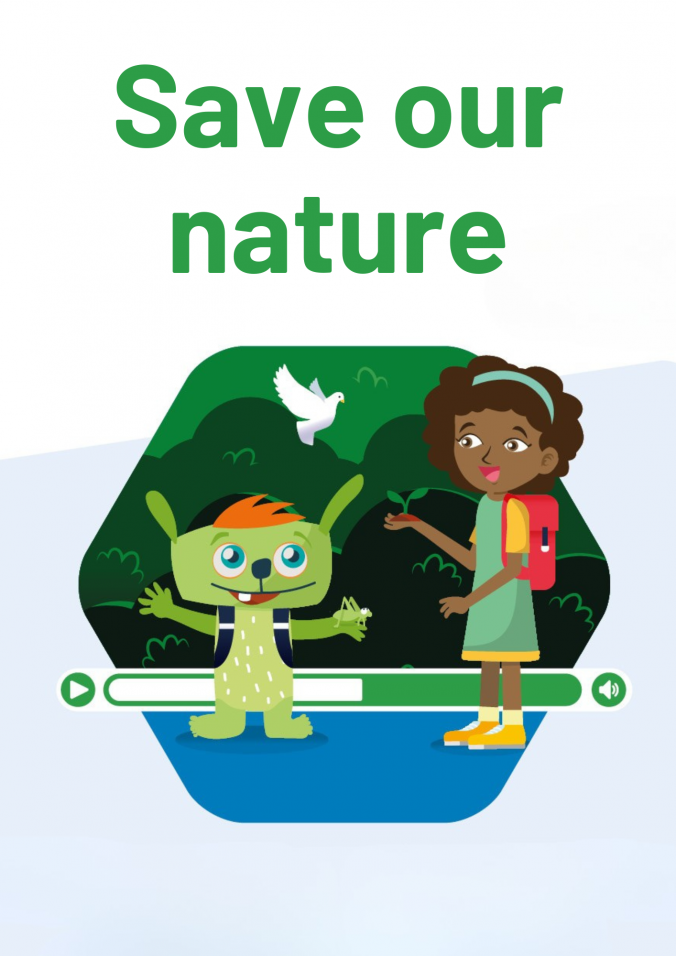How does a Sailboat Work?

Overview
Overview
Keywords: sun energy, wind energy, motion energy, energy transformations, sailboat, swimming and sinking, material characteristics
Subjects: science, physics
Age group: 7-9 years old
Difficulty level: ● ● ○ (medium)
![]()
![]()
This experiment is part of the unit "Eco-Motion" written by: Semih Esendemir (TR), Rute Oliveira (PT)
The experiment is accompanied by the story of Lilu’s and Alina's return journey home using wind, an environmentally friendly renewable energy source. Throughout the experiment, the focus is on sailboat design and energy transfer. Does the sailboat float or sink? Which materials can be used and why? Focusing on the question “What is wind and how does it form?”, the videos help students discover how wind is created and how to convert the movement of air into motion energy.
The activities offer students the opportunity to explore the structure of a sailboat through floating and sinking phenomena and to think deeply about the materials used in sailboat design and the energy source that keeps the sailboat moving. The activities aim to develop students' communication, collaboration, analytical thinking, critical thinking, problem solving, creativity and innovation skills.
Energy is a physical quantity that plays a central role in all areas of physics as well as in technology, chemistry, biology and economics. Its forms include kinetic energy (movement energy), thermal energy (heat energy), radiant energy, chemical energy, elastic potential energy, etc. In the energy industry, primary energy is the energy contained in energy sources that have not yet been further processed (sun, wind, water, etc.). With the young target group in mind, the texts in this unit do not differentiate between physical types of energy and forms of primary energy. The terminology can be differentiated for older students.
The experiment
Required materials
- 9 corks
- rubber bands
- a toothpick or a skewer
- paper
- scissors
- a large container filled with water
Experiment guide
- Divide the nine corks into three groups of three.
- Combine each three corks with a rubber band.
- Create the floor of your boat by combining the three groups of corks you have created with the rubber bands.
- Cut the paper for the sail.
- Put the paper sail onto the toothpick.
- Insert the toothpick or skewer into the cork to attach your sail to the boat. Be careful with the pointed end of the toothpick/skewer.
- Put your sailboat in the water.
- Blow air to move your sailboat.
- Observe the movement of your sailboat.
Questions for students
Here are some suggestions for questions that you could ask the students when the video stops.
- How does a sailboat move?
- How does the wind move a sailboat?
When discussing the questions suggested above, you can have your students do the interactive exercise "How does a sailboat move?" You can also download and copy the h5p file by clicking on the "reuse" icon in the bottom left corner.
Solution for teachers
The correct order is:
- The sun heats up the air.
- Warm air rises.
- Cold air flows in.
- The flowing air pushes the boat.
The experiment with the result
Explanatory video
Lilu and Alina think they can build a sailboat using corks and use wind energy to get home. Do you agree with Lilu and Alina? Can Lilu and Alina reach their home this way? The answer to these questions lies in understanding the structure of the materials and the wind.
Here you can download the transcript of the video as docx and pdf.
Most of the vehicles used for transportation use fossil fuels, which are non-renewable energy sources. Fossil fuels are formed from fossilized organisms. Oil, natural gas and coal are the most common types of fossil fuels. Fossil fuel resources are finite and at risk of running out in the future. In addition, the accumulation of carbon dioxide gas in the atmosphere resulting from the use of fossil fuels causes the greenhouse effect. For these reasons, it is very important for our future to reduce the use of fossil fuels and replace them with renewable energy sources.
Based on this, in this video, students are expected to design a sailboat for Lilu and Alina, who want to return home from the island, using renewable energy source, wind energy. The aim of the video is to raise awareness about environmentally friendly vehicles that do not use fossil fuels through different designs that demonstrate the conversion of renewable energy sources into motion energy.
For boat design, materials that float in water should be used. Cork was used in this video. Cork is obtained from the bark of the cork oak tree. Cork has a porous structure. Since its pores are filled with air, it can float on the water surface. In the sponge boat video you can learn how substances with air-containing pores can float on water.
The sun is our most important source of energy. Solar energy can be converted into various forms of energy. To generate wind, solar energy is first converted into thermal energy. Because land and water surfaces heat up differently, the air masses above them are heated to different degrees. This creates wind (see section "How is wind created?"). When this wind energy hits the sail of the boat, it is converted into kinetic energy, which enables the sailboat to move forward.
- Wind is moving air.
- Warm air rises, cold air falls down to the earth.
- When warm air rises, something is missing where the warm air was before. This is called low pressure. Air flows into it from the surrounding area where the air pressure is higher.The movement of this colder air is the wind we can feel and perceive.
- The sun is our most important source of energy. Solar energy is transformed into heat energy in our atmosphere, land and seas. The atmosphere, land and seas heat up at different rates under sunlight. Land warms and cools faster than the sea, while the sea warms and cools more slowly. This temperature difference between land and sea allows the air to move. We call this air movement wind. You can observe wind formation by placing two containers filled with soil or sand and ice under the light and burning an incense.
- Wind energy allows the sailboat to move.
How does this video link to sustainability?
The main topic at the centre of the video is designing a sailboat that moves with wind energy, a renewable energy source. For a sustainable future and to reduce climate change, it is very important to consider the sources from which we obtain energy. We need to minimize the use of fossil fuels and turn to renewable energy sources. This way, we can protect our world from potential problems.
Differentiated learning
Explore ideas how you can use this material in your class and adapt it to a group of various levels and learning styles.
Extension activity: Sponge boat experiment
You can repeat this activity using a sponge instead of corks. A sponge has a porous structure like cork. It can float on water due to the air in its pores. The sponge may seem like a suitable material for sailboat design, but if the pores of the sponge are filled with water, this will prevent the sailboat from floating.
Easier
You can promote the activity in different ways to involve different groups of students in your class. For example, you can tell the story of Lilu and Alina through reading, drawing or drama. This can help to reach the whole class. Individual learning plans can be prepared for students who have difficulty with group work, while students who have difficulty with individual learning can work in groups. During the sailboat design process, students can be encouraged to reflect on their own ideas and thoughts, while support can be provided according to individual needs.
More challenging
For higher level student groups, wind formation processes can be elaborated on the particles that make up the air, particle movements and air pressure.
Career orientation
Which career options are linked to this experiment and how can you introduce them to your students?
As this activity aims to demonstrate energy transformations through engineering and design processes, it can be linked to the following professions:
Marine and ship engineering, naval architecture
- To learn more about marine engineers, you can watch this career girls video.
Materials engineering
- To learn more about materials engineers, you can watch this career girls video.
Energy systems engineering
Outlook
At the end of the activity, each student is expected to design a sailboat and move the sailboat using wind energy. Giving students the opportunity to design their own sailboats during the activity will contribute to the development of their imagination and creativity. Experimenting with variables such as the number of corks they will use in the sailboat design, the size and shape of the paper they will use for the sail, etc. will be useful for them to discover the differences in the movement of the sailboat.
To enrich your activity, you can show pictures of the effects of wind at the entrance of the activity, and if you have a windy day, you can go outside and feel the wind with your students. You can design a weathervane to observe the movement of the air.
If you want to adapt your activity for different levels of students, you can organize a competition for the best sailboat design in the water. Each student can design their own sailboat.
If you want to develop your activity with the concepts of density and floating in water, you can watch the sponge boat video.
Wind energy, Encyclopædia Britannica
(last accessed 21.11.2024)Wind, National Geographic Education
(last accessed 21.11.2024)Energy Kids: Wind, U.S. Energy Information Administration (eia)
(last accessed 21.11.2024)Energy Transformation: How Does It Do That?, National Geographic Education
(last accessed 21.11.2024)Career orientation videos:
Marine engineer, Career Girls
Materials engineer, Career Girls(last accessed 01.04.2025)
In Does Rubbish Float or Sink? students can discover what conditions are needed for an object to float.
This experiment is part of the unit "Eco-Motion" written by: Semih Esendemir (TR), Rute Oliveira (PT)
Share this page

